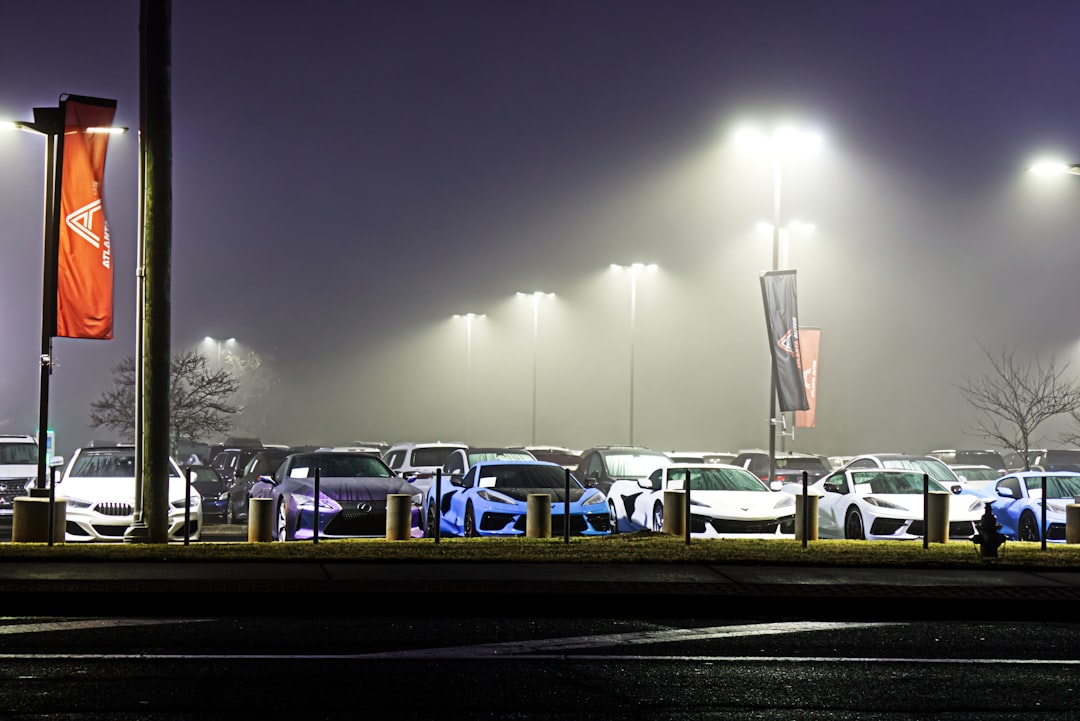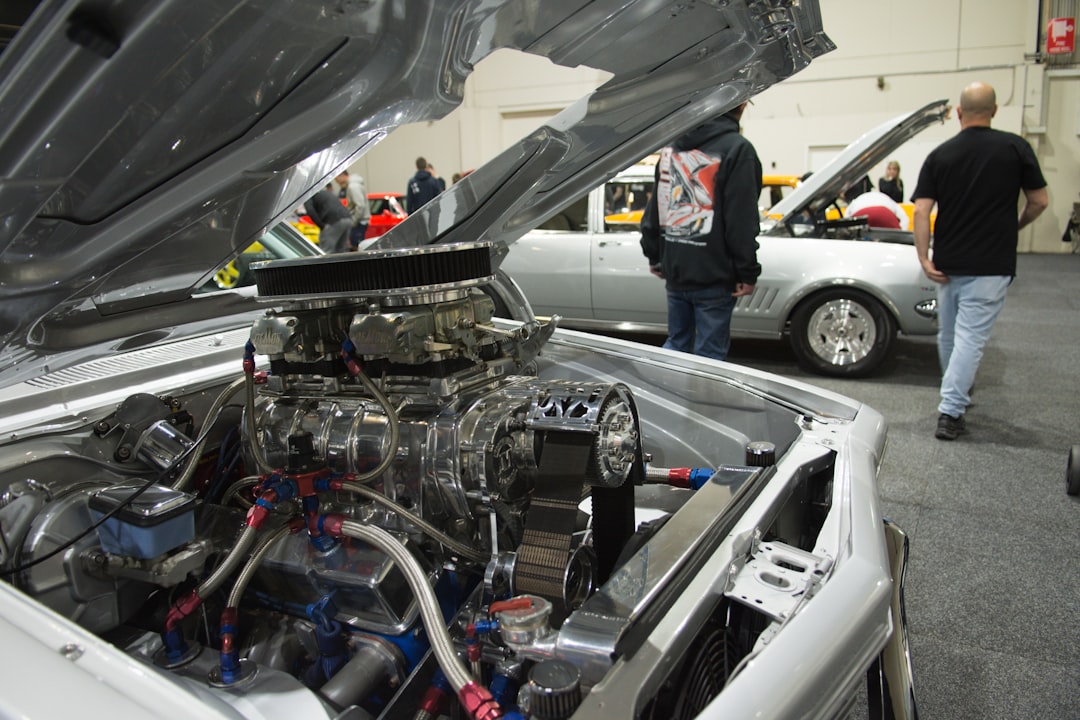

Engage prospects with a scan and streamline customer engagement with FREE QR code marketing tools by Sona – no strings attached!
Create a Free QR CodeFree consultation

No commitment

Engage prospects with a scan and streamline customer engagement with FREE QR code marketing tools by Sona – no strings attached!
Create a Free QR CodeFree consultation

No commitment
Auto emissions testing centers are entering an era where digital transformation is a competitive necessity. With growing regulatory requirements, stricter environmental benchmarks, and informed consumers searching for emissions testing near me, the challenge is to create a service experience that is both compliant and customer centric. Outdated workflows, missed lead capture moments, and analog data collection lead to lost revenue, overlooked high-value prospects, and ineffective marketing spend.
A persistent issue in these centers is the risk of missing potential customers who interact anonymously, such as visiting the site or walking in without ever making themselves known. Manual forms and disconnected check-in processes often mean these interested prospects are never tracked in the CRM, leaving sales and marketing teams unable to follow up or retarget these leads effectively. QR codes bridge that gap by turning every physical touchpoint into a digital action, moving visitors into trackable journeys that inform smarter decisions and higher conversion rates.
QR codes have emerged as a bridge between offline operational touchpoints and digital engagement, helping auto emissions testing centers replace paper forms, brochures, and manual intake with seamless digital journeys. Smart QR deployments allow operators to capture high-value leads, educate customers on the emissions testing process, and deliver instant access to personalized information without the need to download an app or staff every interaction. This approach streamlines operations and ensures fewer high-fit prospects slip through the cracks, while building a foundation for measurable marketing and continuous improvement across locations.

For most auto emissions testing centers, capturing customer engagement as it happens is a challenge. Common pain points include customers failing to fill out paper forms, anonymous researchers who never schedule appointments, and missed opportunities because lead data is not recorded in real time. These gaps not only hurt conversion, they also create operational drag that is felt by front desk staff, technicians, and managers.
QR codes bridge the gap between traditional vehicle inspection workflows and digital lead generation. By digitizing the intake process, QR codes can direct customers from their first contact straight into your CRM, scheduling tool, or educational resources, making sure that every high-fit visitor or walk-in is recognized and followed up promptly. The same technology replaces analog formats like printed brochures, paper consent forms, and manual sign-in sheets, producing cleaner data and less administrative burden across the team.
By modernizing operations in this way, centers transform offline customer actions into measurable outcomes. Sona QR can automate code creation, monitor performance, and sync scan data with your CRM and advertising platforms, reducing manual work and ensuring that no valuable prospect goes unnoticed.

Auto emissions testing centers often face the frustration of limited visibility into who is engaging with their services, especially when customers interact anonymously, fail to schedule a formal appointment, or respond to local advertising without leaving a digital trail. This lack of insight means potential leads remain unknown and unpursued, weakening follow-up efforts and reducing the impact of marketing investments. It also prevents operators from understanding which channels or placements are driving meaningful results.
QR codes directly address this gap by enabling more precise tracking and engagement at each customer touchpoint. With a single scan, centers can capture intent, collect contact information, and route visitors to the next best action. When paired with a centralized platform such as Sona QR, these scans become the foundation of a measurable, multi-channel funnel that starts with a poster, postcard, or window decal and ends with a booked appointment or retest.
These advantages help turn walk-ins, drive-bys, and offline interactions into known leads, supporting timely outreach that improves operational efficiency and ROI. Over time, centers build a richer dataset that supports staffing decisions, pricing tests, and targeted retest promotions.

With churn risk and missed upsell moments rising whenever engagement signals go untracked, emissions testing centers need QR formats that integrate with automation and analytics. Choosing the right format ensures the code’s destination matches the user’s context, whether that is scheduling, paying, learning, or giving feedback.
Auto emissions testing centers can implement various QR code formats for different operational needs. Dynamic codes are strongly recommended for any destination that may change, such as regulatory updates, multi-location scheduling, or promotional offers. Static codes can be used for permanent, always-on resources like maps or evergreen educational content.
Dynamic QR codes offer flexibility to adjust destinations based on engagement signals and journey stage. Sona QR lets teams manage and update these codes centrally, run A/B tests on landing pages, and align messaging across every touchpoint without repeated printing.

Growth in auto emissions testing stems not just from more traffic, but from recognizing and acting on high-intent moments before competitors do. Many centers capture lead information too late in the process, missing out on retest reminders, maintenance recommendations, or fleet contract inquiries. QR codes help surface these moments and deliver data that supports timely follow-up.
Strategic placement amplifies results because it maximizes the volume of useful scans. Identify the points where customers wait, make decisions, or look for instructions, then deploy context-appropriate QR codes that remove friction and capture the moment of interest.
These targeted deployments convert high-intent visits into actionable opportunities and align marketing, operations, and customer service around measurable results.

Operational inefficiencies and disconnected campaigns often lead to inconsistent messaging and wasted spend. QR codes unify the experience, guiding customers to the next best action while capturing the data needed to optimize each step. The most effective use cases meet a real need in the moment and remove a point of friction for customers or staff.
Contactless check-in is one of the highest-impact starting points. Place a prominent QR code at the entrance or on the counter that launches a mobile-friendly form. Collect name, contact details, plate number, and vehicle identification while delivering instructions and estimated wait times. The form can also ask for communication preferences to enable SMS updates, reminders, and retest nudges.
Post-test education is another key use case that drives retention and upsell. Include a QR code on the printed emissions result sheet or digital receipt. When scanned, the code can deliver tailored advice according to pass or fail status, links to approved repair shops, or special pricing for a retest within a defined window. This precise, contextual follow-up turns uncertain outcomes into guided next steps that protect revenue.
Customer feedback collection is essential for reputation management and service improvement. QR codes on receipts, exit signage, and counter stands invite customers to rate their experience, leave a review, or suggest improvements. This can feed Google reviews or internal NPS tracking, or a service recovery queue for immediate outreach to low scorers. Over time, feedback data helps managers refine staffing, signage, and processes.
These scenarios support compliance, operational efficiency, and revenue growth by making every visit part of a measurable retention and acquisition strategy rather than a one-off transaction. Add further use cases like QR-based loyalty enrollment, fleet account inquiry forms, and seasonal coupon claims to extend the value of each interaction.
Many marketing initiatives falter because valuable leads who interact with your brand remain untracked or anonymous. Advanced QR-based workflows make it possible to segment and nurture every prospect who scans a code, ensuring that no signal of purchase intent is missed. The key is to deploy multiple codes across journey stages so scans reveal context and readiness.
With Sona QR, each scan can be captured with metadata such as location, asset, and timestamp, then synced to your CRM and ad platforms. That enables automated segmentation and timely follow-up with content that matches the scanner’s intent. The result is a dynamic audience database that learns from every visit and refines targeting over time. See Sona’s blog on intent data.
Industry-specific distinctions sharpen your strategy. Separate individual motorists from fleet managers, first-time visitors from annual returners, and pass-result scanners from fail-result scanners. For instance, those who scanned a code on a failed test sheet should receive repair partner guidance and retest coupons, whereas those who passed can be invited to enroll in annual reminders with early-bird pricing for next year.
Disconnected campaigns and inconsistent messaging confuse prospects and waste resources, especially when offline and digital do not align. QR codes act as connectors across your marketing stack, enabling real-time engagement and richer data collection everywhere your brand appears. When managed in a centralized platform, they become the standard link between physical placements and measurable outcomes.
Integrate QR codes into the channels that matter most for emissions testing centers, and design each placement with a clear call to action. Use Sona QR to keep messages current, test different CTAs, and monitor which media drive the highest-quality scans and conversions. The objective is a continuous funnel where every scan moves the visitor closer to a booked appointment or successful retest.
Centralized QR code management ensures every touchpoint is tracked and messaging matches the buyer’s stage. With Sona QR, you can manage codes for outdoor signage, waiting rooms, receipts, and mailed reminders in one dashboard, then sync scan data to your CRM and ad platforms for lifecycle marketing.
Begin by defining a single, high-value objective. Examples include increasing online bookings, digitizing check-in to reduce bottlenecks, or capturing feedback to improve service quality. Specify the gap you aim to close, such as anonymous walk-ins, missed retest reminders, or untracked direct mail responses.
Choose between static and dynamic codes. Static codes are best for destinations that will not change, such as a map or a state compliance PDF. Dynamic codes are better for anything you might update or want to track, like booking links, FAQs, or special offers.
Launch where anonymity or drop-off is most likely. Emphasize placements that see high traffic and where a scan produces immediate value for the visitor.
Treat the campaign as a living system. Monitor scans, completions, and downstream outcomes, then iterate on design, copy, placement, and destination content to improve results.
This checklist creates a strategic path from idea to impact, ensuring QR deployments address real bottlenecks and turn offline attention into measurable outcomes.
One of the most common frustrations among emissions testing centers is the inability to attribute offline interactions to revenue. Without connecting scans to bookings, test outcomes, and retests, teams are left guessing which placements and messages are working. Integrated QR tracking changes that by linking every scan to a customer record and a subsequent action. See Sona’s blog on offline attribution.
Sona QR and Sona.com provide a connected analytics layer that starts at the code and extends through your CRM and marketing stack. You can capture granular scan data, measure engagement by channel and context, and attribute pipeline and revenue impact across campaigns. The result is a performance loop where each improvement compounds over time.
By adopting these strategies, operators finally connect the dots between offline engagement and digital ROI. This lets you justify investments, reduce wasted spend, and continuously optimize toward the placements and messages that produce the greatest return.
As you scale QR deployments, avoid generic campaigns that fail to capture meaningful signals. Focus on precise placements, targeted CTAs, and automated follow-up that turns a single scan into an ongoing conversation. Educate staff to champion scanning at the right moments so customers understand the value.
Below are practical tips that match the realities of emissions testing centers and support a clear buyer journey from awareness to retest. Use these to standardize your operating playbook across locations and seasons.
Creative deployment examples include windshield clings on courtesy parking spots with a Scan here to check wait time CTA, and a QR code on emissions result forms that launches a personalized retest path with available times and a pre-applied coupon.
Operating in a highly regulated, competitive field, auto emissions testing centers can no longer rely on paper-based systems and disconnected campaigns. Every anonymous walk-in or untracked response to a mailer is a missed opportunity that could have become a booked appointment, a retest, or a long-term relationship. QR codes provide a strategic path forward by turning physical surfaces into digital entry points and every moment of interest into measurable action.
The value is twofold. First, QR deployments streamline operations, replacing manual forms and redundant paperwork with fast, mobile-first experiences that reduce errors and improve throughput. Second, they add a layer of analytics and automation that connects scans to appointments, outcomes, and revenue. With Sona QR and Sona.com, centers can generate, manage, and track codes across locations, sync insights to CRM and ad platforms, and attribute real business results to specific placements and messages.
Here is what effective implementation delivers over time:
From the parking lot to the point of sale, each scan becomes a signal. Modern emissions testing centers that adopt QR codes strategically will capture demand at the source, convert interest into measurable results, and build durable growth through better experiences and smarter data. With the right tools and a clear playbook, that transformation can start today. Start creating QR codes for free.
QR codes have transformed auto emissions testing centers from routine checkpoints into powerful customer acquisition and engagement hubs. They streamline the lead capture process, enhance customer convenience, and provide real-time data on which marketing efforts drive appointments and repeat visits. Imagine instantly connecting with vehicle owners as they wait, delivering tailored offers or educational content that turns a simple test into ongoing loyalty.
With Sona QR, you gain the ability to create dynamic, trackable QR codes that can be updated on the fly—no need to reprint materials. Each scan links directly to actionable insights, helping you optimize campaigns, increase bookings, and measure ROI with precision. Start for free with Sona QR today and transform every scan into a valuable lead and lasting customer relationship.
The auto emissions test process includes vehicle check-in with digital forms, vehicle inspection, and post-test education with tailored advice based on pass or fail results.
You can locate nearby auto emissions testing centers using QR codes placed on outdoor signage, parking lot posters, or online location finders accessible via scan.
Costs vary by location and services, but QR codes at checkout can provide secure payment portals, digital receipts, and promo codes to simplify payment and track fees.
Frequency of emissions testing depends on state regulations which can be accessed through dynamic QR codes that provide up-to-date requirements and procedures.
If a vehicle fails, QR codes on the result sheet deliver tailored advice, links to approved repair shops, and special pricing for retests within a defined period.
Use Sona QR's trackable codes to improve customer acquisition and engagement today.
Create Your FREE Trackable QR Code in SecondsJoin results-focused teams combining Sona Platform automation with advanced Google Ads strategies to scale lead generation

Connect your existing CRM

Free Account Enrichment

No setup fees
No commitment required

Free consultation

Get a custom Google Ads roadmap for your business






Launch campaigns that generate qualified leads in 30 days or less.
